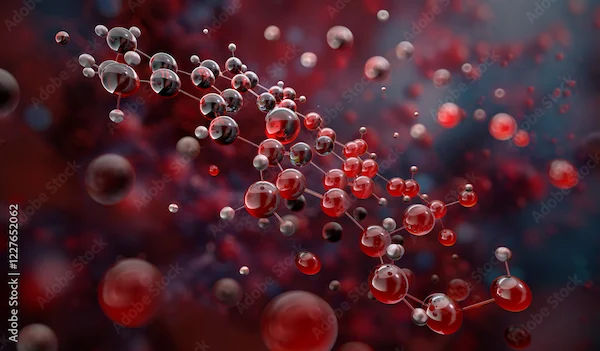Understanding Myelodysplastic Syndrome, Tests and Treatment
Discover what myelodysplastic syndrome (MDS) is, its causes, symptoms, diagnostic tests, and treatment options to better understand and manage this bone marrow disorder.

Written by Dr. Rohinipriyanka Pondugula
Reviewed by Dr. Siri Nallapu MBBS
Last updated on 27th Aug, 2025

Introduction
Myelodysplastic Syndrome (MDS) is a group of blood disorders that affect the bone marrow's ability to produce healthy blood cells. If you or a loved one has been diagnosed with MDS, it’s natural to feel concerned. However, understanding the condition, its symptoms, and available treatments can help you manage it better.
This article will explain MDS in simple terms, covering its causes, symptoms, tests, and treatment options. We’ll also share tips on managing the condition and when to seek medical help.
What is Myelodysplastic Syndrome (MDS)?
MDS occurs when the bone marrow, the spongy tissue inside bones where blood cells are made, doesn’t function properly. Instead of producing healthy red blood cells, white blood cells, and platelets, it makes abnormal or immature cells. Over time, this can lead to:
- Low red blood cells (anaemia) – causing fatigue, weakness, and shortness of breath.
- Low white blood cells (neutropenia) – increasing the risk of infections.
- Low platelets (thrombocytopenia) – leading to easy bruising or bleeding.
In some cases, MDS can progress to acute myeloid leukaemia (AML), a type of blood cancer. However, not all MDS cases turn into leukemia, and many people live with MDS for years with proper care.
Consult a Haematologist for the best advice
What Causes MDS?
The exact cause of MDS is often unknown, but certain factors may increase the risk:
- Age – Most people diagnosed with MDS are over 60.
- Previous chemotherapy or radiation therapy – Some cancer treatments can damage bone marrow.
- Exposure to harmful chemicals – Such as benzene (found in tobacco smoke, gasoline, and industrial solvents).
- Genetic disorders – Some inherited conditions (like Fanconi anaemia) raise the risk.
Common Symptoms of MDS
Symptoms depend on which blood cells are affected. Some people may not notice symptoms early, while others experience:
- Fatigue and weakness (due to low red blood cells)
- Frequent infections (due to low white blood cells)
- Easy bruising or bleeding (due to low platelets)
- Shortness of breath
- Pale skin
If you have persistent symptoms, consult a doctor for evaluation.
Tests to Diagnose MDS
If MDS is suspected, doctors may recommend:
1. Complete Blood Count (CBC) – Checks levels of red cells, white cells, and platelets.
2. Peripheral Blood Smear – Examines blood cells under a microscope for abnormalities.
3. Bone Marrow Biopsy – A small sample of bone marrow is taken to check for abnormal cells.
4. Genetic Testing – Helps identify specific gene mutations linked to MDS.
These tests help confirm MDS and determine its severity.
Get Your Health Assessed
Treatment Options for MDS
Treatment depends on the type and severity of MDS. Options include:
1. Supportive Care
- Blood transfusions – To manage anaemia or low platelets.
- Medications – Such as growth factors to boost blood cell production.
- Antibiotics – To prevent or treat infections.
2. Disease-Modifying Therapies
- Hypomethylating agents (Azacitidine, Decitabine) – Help slow disease progression.
- Immunosuppressive therapy – Used in certain MDS subtypes.
3. Stem Cell Transplant
- The only potential cure for MDS, but it’s a complex procedure usually recommended for younger, healthier patients.
Your doctor will suggest the best approach based on your age, overall health, and MDS type.
Lifestyle Tips for Managing MDS
While medical treatment is essential, these lifestyle changes can help improve quality of life:
- Eat a balanced diet – Include iron-rich foods (leafy greens, beans) and vitamin B12 (eggs, dairy) to support blood health.
- Stay active – Gentle exercises like walking can reduce fatigue.
- Prevent infections – Wash hands frequently, avoid crowds during flu season, and stay up-to-date with vaccinations.
- Manage stress – Meditation, yoga, or talking to a counselor can help.
When to See a Doctor?
If you experience:
- Unexplained fatigue, weakness, or dizziness
- Frequent infections
- Easy bruising or bleeding
- Shortness of breath
Consult a haematologist (blood specialist) for further evaluation.
Final Thoughts
Living with MDS can be challenging, but with the right care, many people lead fulfilling lives. Early diagnosis and proper treatment are key. If you have concerns about MDS, don’t hesitate to reach out to a healthcare provider.
Consult a Haematologist for the best advice
Consult a Haematologist for the best advice

Dr. Sushith C
General Physician
2 Years • MBBS
Bengaluru
PRESTIGE SHANTHINIKETAN - SOCIETY CLINIC, Bengaluru
Dr Sumanth R
General Physician
2 Years • MBBS
Bengaluru
PRESTIGE SHANTHINIKETAN - SOCIETY CLINIC, Bengaluru

Dr. Ramalinga Reddy
General Physician
5 Years • MBBS MD General medicine
Bengaluru
PRESTIGE SHANTHINIKETAN - SOCIETY CLINIC, Bengaluru

Dr. Thorana Prakash M
General Physician
2 Years • MBBS
Bengaluru
PRESTIGE SHANTHINIKETAN - SOCIETY CLINIC, Bengaluru

Dr Vijaykumar Shirure
Haematologist
8 Years • MBBS, MD, DM (Clinical Hematology), Fellow (Hemato-oncology), Fellow (Bone Marrow Transplantation)
Ahmedabad
Apollo Hospitals Gandhinagar, Ahmedabad
Consult a Haematologist for the best advice

Dr. Sushith C
General Physician
2 Years • MBBS
Bengaluru
PRESTIGE SHANTHINIKETAN - SOCIETY CLINIC, Bengaluru
Dr Sumanth R
General Physician
2 Years • MBBS
Bengaluru
PRESTIGE SHANTHINIKETAN - SOCIETY CLINIC, Bengaluru

Dr. Ramalinga Reddy
General Physician
5 Years • MBBS MD General medicine
Bengaluru
PRESTIGE SHANTHINIKETAN - SOCIETY CLINIC, Bengaluru

Dr. Thorana Prakash M
General Physician
2 Years • MBBS
Bengaluru
PRESTIGE SHANTHINIKETAN - SOCIETY CLINIC, Bengaluru

Dr Vijaykumar Shirure
Haematologist
8 Years • MBBS, MD, DM (Clinical Hematology), Fellow (Hemato-oncology), Fellow (Bone Marrow Transplantation)
Ahmedabad
Apollo Hospitals Gandhinagar, Ahmedabad





